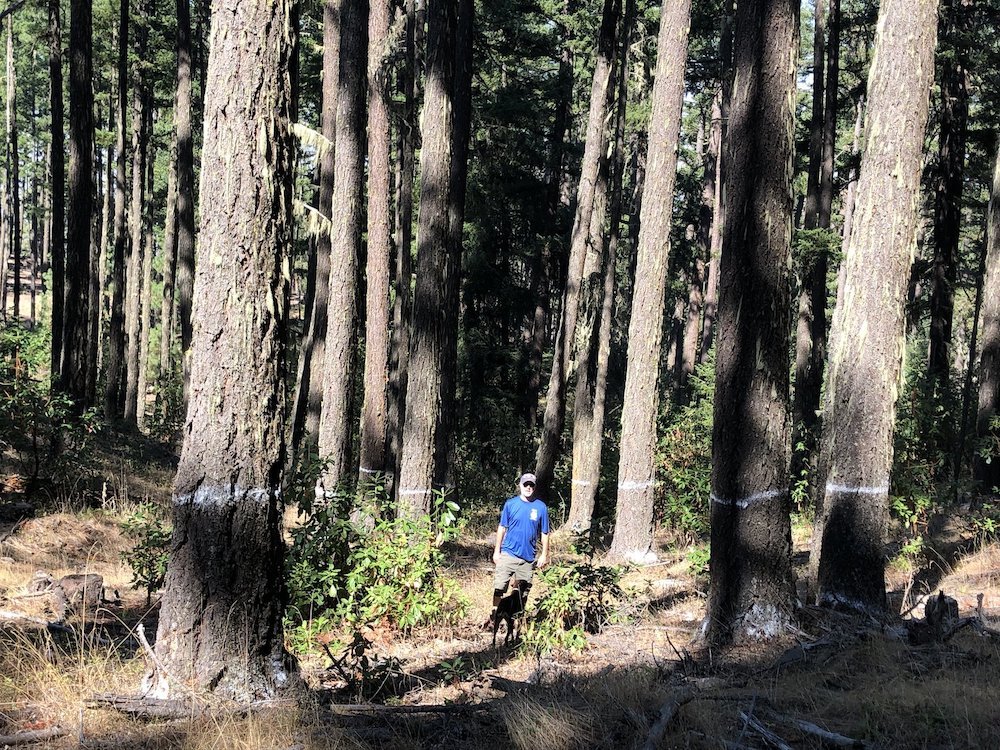Going to court against BLM's IVM and Late Mungers
Written by George Sexton, March 19th, 2024
Updated April 25th, 2024
Do you remember the BLM's Integrated Vegetation Management plan to log old-growth Late Successional Reserves like those located in the Late Mungers timber sale near Williams? After commenting, public meetings, field checking, and trying everything we could think of to get BLM to retain these old-growth forests, we finally will have our day in court, and you are invited to join us. Here's a refresher on how we got here:
“Integrated Vegetation Management” Is Not What It Sounds Like
It sure sounds benign, doesn’t it? The words “integrated vegetation management” evoke visions of thoughtful fuel reduction efforts designed to restore and protect public forests and surrounding communities. There’s no doubt the name was chosen for a reason. Unfortunately, BLM timber planners are using their new Integrated Vegetation Management (IVM) project to target old-growth forests within Late Successional Reserves for conversion into “open seral” stump-fields devoid of trees.
Open Seral “Gap Creation” Means Clearcutting
A common logging technique in IVM timber sale units is “gap creation” in which the BLM removes late-successional forests from the Late Successional Reserves in football field sized patches and then replaces the fire-resilient old-growth forest with a flammable second-growth timber plantation. This logging technique removes forest habitat while increasing fire hazard.
Why is the BLM Doing This?
The actions of the Medford District BLM are motivated by two sets of timber targets. The BLM assigned itself both a yearly timber volume target for all land use allocations and an acreage logging target that is specific to the Late Successional Reserves. Timber planners hope that IVM will speed the logging of the Late Successional Reserves by curtailing analysis and public involvement in order to meet the arbitrary timber targets.
The Proof is in the Pudding
The first two old-growth timber sales issued as part of the IVM program demonstrate exactly how this logging scheme is intended to work. The Penn Butte and Late Mungers timber sales are located in the Williams Late Successional Reserve and are marked to remove old-growth forest canopy and build new logging roads through late-successional forests while lower elevation timber plantations near to homes and farms remain untreated.
APRIL 25, 2024 UPDATE:
On April 2nd, 2024, a federal magistrate judge heard arguments from plaintiffs KS Wild, Oregon Wild, Cascadia Wildlands and the Soda Mountain Wilderness Council. We were represented by the Crag Law Center. The Court seemed sympathetic to the idea that Late Successional Reserves should be managed for Late Successional habitat.
The BLM had initially intended to rush ahead with the Late Mungers timber sale before the court issues a ruling on the case. But, late on the afternoon of April 24th the BLM posted a short note postponing the auction scheduled for the next day, April 25th. A few days later, the BLM announced they would be rescheduling the auction for May 23rd.
It looks increasingly more likely that the court will rule on the legality of the BLM's Late Successional Reserve agenda before logging starts at Late Mungers. Stay tuned for more updates.



